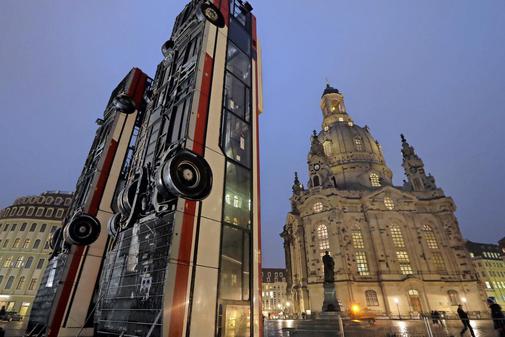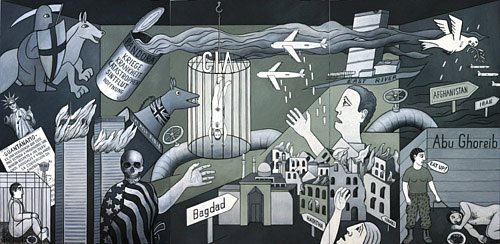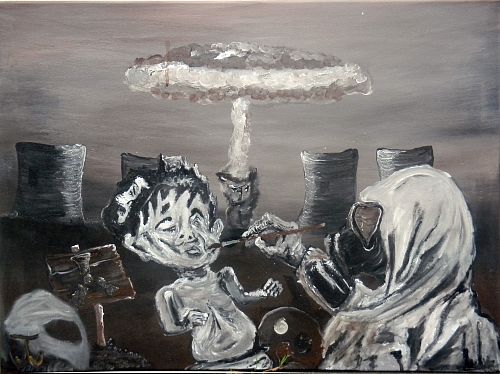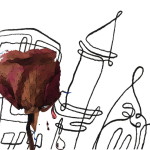Art and War
A piece of art creates conflicts in the German Town of Dresden. Syrian-German artist Manaf Halbouni is using three real Busses as installation objects in front of the Frauenkirche.
It is recalling the bus-barricades that had been used in Aleppo to shelter civilians. The photos had been a symbol for the destructiveness of the Syrian war in 2015.
Ultranationalist German demonstrators are claiming the location for the art work would be most unfitting and a simple act of madness. A most ignorant approach towards the historical rooted symbolism of the place.
The roots of the church are 1000 years old. Already in 1933 a black Cross was installed as a memorial for the Dead of WWI. by architect Oscar Menzel. After the destruction of the building during the bombardement of Dresden in 1945 the ruins were used as a memorial against war for 40 years. In the 1980th the location got a meeting place for the opposition against the GDR’s Regime. After the reunification the building was reconstructed in a Barock Style. Still it is a memorial place for the defension of peace and freedom.
Nowadays the anti-multicultural movement PEGIDA (Patriots saving the Okzident) is using the square regularily for demonstrations against “foreign-muslim” influence in Europe.
Just evaluating the historical symbolism of the Frauenkirche the anti-war installation of Manaf Halbouni is harmonizing much more with its original mission then the PEGIDA-demonstrations. It is a clear statement for peace, transforming solide German Busses into anti-war symbols. As the child of a mother from Dresden and a Damascene father Halbouini is fusing his personal history very meaningful in this work.
Art against war uses diverting, dialectical esthetics most of the time and usually it is either produced after the war or in another location. Photographers like Robert Capa lost their lifes on the war fields because they developed an attitude towards the armed conflict that forced the artist to be part of the battle field. But art doesn’t have to be realistic, the contrary most of the time it should’nt be.
Strong metaphors and their visualization are differing in certain stages of art history. Nowadays the digital technology allows artists like Tammam Azzam to fuse reality and fiction by using editing software. Photographs of a Syrian war field are “painted” with a digital projection in the scheme of a famous painting bu Gustav Klimt. A beautiful and powerful quotation. Manaf Halbouni is quoting a contemporary famous war-field-photo for his installation at the symbolic right place. Dresden can be prowd of it.
Related Posts
Tags: Art, art against war, Dresden, germany, Syria, War
Trackback from your site.











